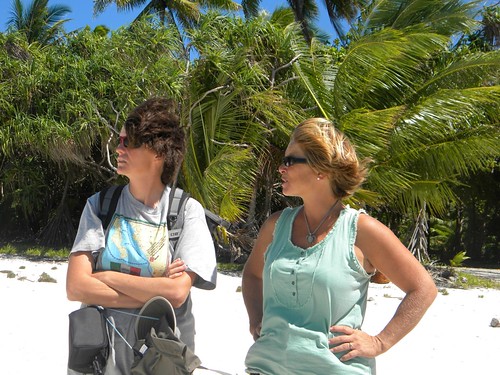 |
| Mom's Scoping the Business Uploaded by toastfloats |
 |
| That Steep, Really... Uploaded by toastfloats |
 |
| Mom's Scoping the Business Uploaded by toastfloats |
 |
| That Steep, Really... Uploaded by toastfloats |
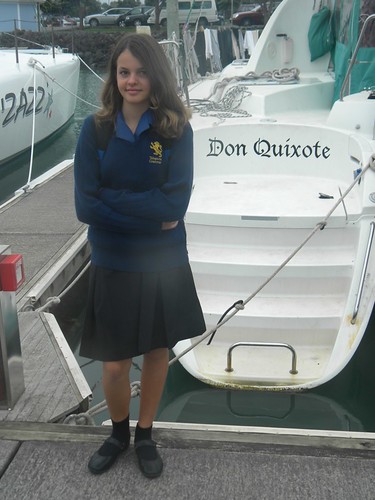 |
| Mera Goes to High School Uploaded by toastfloats |
 |
| Rescuing Discovery -- Again Uploaded by toastfloats |
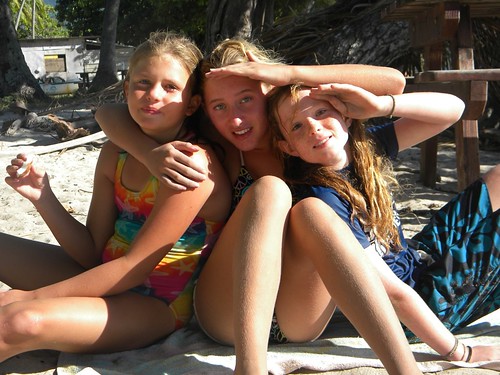 |
| Our Little Girls Uploaded by toastfloats |
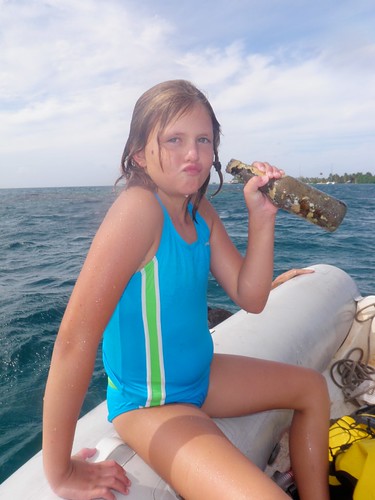 |
| Drinking Junk Uploaded by toastfloats |
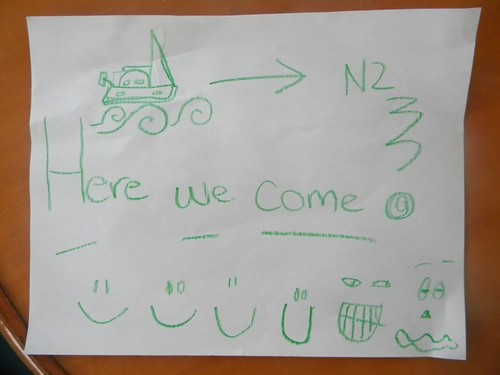 |
| Time to Become Kiwis Uploaded by Toastfloats |
 |
| Kau Laka! [Let's Parade!] Uploaded by tokisioamerica |
 |
| Wild Aeron Uploaded by toastfloats |
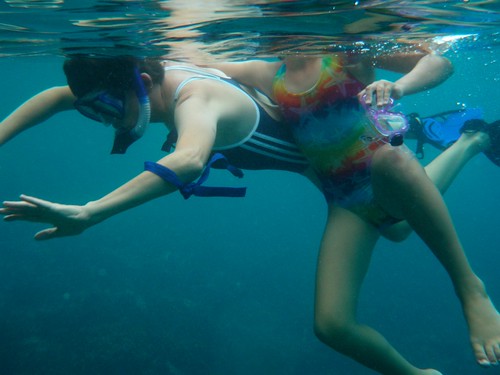 |
| Mama Whale with Baby Uploaded by toastfloats |
 |
| Ferried Around Uploaded by Toastfloats |
 |
| Bayswater Marina This is a file from the Wikimedia Commons. |
Strange as it may seems, New Zealand does not accept a marriage certificate as proof of partnership. Instead, we must prove our relationship in other, sometimes odd and convoluted ways. One of the requests is for:
"Letters of support from family, friends, employers, or others who can confirm your relationship. The writer should include name and contact number."
They also want:
"Photos of you together, especially with other family/friends or at significant events."
I thought this might actually be kind of fun. If you want to play, please send me a Facebook message, blog link, email or even *gasp* hard copy with your letter of support. By all means, include photos. The more detail you provide about the "genuine, stable and ongoing relationship" between DrC and myself the more potentially entertaining and useful your contribution. If you want to share your support with more than just NZ Immigration, go ahead and put it somewhere public but please send me your contact information for the authorities.
Thanks everyone!
Hardcopy should go to:
s/v Don Quixote
Bayswater Marina
Bayswater, Auckland, NZ 0622
This is one of those moments where I strongly regret that Don Quixote does not carry two items of equipment now seen on the well-stocked cruising boat: AIS Tx/Rx and a SeaMe radar repeater. The Automatic Identification System is essentially 'whois' for boats. Hmmm, only computer geeks probably understood that analogy. Let's try this again. Every boat has a unique identity in the global system of radio communication. With an AIS transceiver (Tx), a boat broadcasts this electronically to every boat within several hundred miles -- and incidentally but totally pointlessly except in certain limited emergencies -- to all airplanes as well. The announcement says important things like your boat name and size, location, heading, speed, and registry. With an AIS receiver (Rx), these signals are detected and then plotted on a heads up display. They are often incorporated into your helm navigation station in boats with newer electronics packages. AIS is internationally mandated for all vessels over a certain size. I do not know the size off hand, but think Big. When Don Quixote was commissioned, AIS Tx was illegal for small craft. I guess the thinking is that we would clutter up the display. We met cruisers in Mexico with AIS Rx which they swore saved them from getting run down like chickens on a Tongan street by freighters and cruise boats. Now it is legal for even small craft to own both send and receive. Next time. I like the notion of being able to call out a boat on the horizon by name.
The SeaMe radar repeater we have only seen once on a boat named s/v Catacaos. Lorraine and Graham are registered out of Jersey (look that one up -- a country, not a state). Graham is a coastie for Jersey, and someone who's nautical acumen I trust deeply. I don't know if I'm spelling this correctly, but they had what sounded like a "SeaMe" radar repeater. What it did was sit there passively doing nothing until it detected someone else's radar signal. Then it lit up and started to broadcast a very loud return. Catacaos was one of the most visible boats ever to appear on our radar with a stronger, more steady return than even the floating islands known as cargo containers. Our radar has trouble detecting land, but it had no difficulty telling us precisely where Catacaos was out to 12 miles. I want one of these. Better than being able to call a boat and get its attention is to be so "loud" electronically that the boat's own navigational systems alert the driver.
For these last few hundred miles of our cruising life, however, we are powerful radar toy-less. We've made it this far, so I am optimistic we'll manage to dodge traffic through our last overnight. We are, however, going to light the boat up like a Christmas tree: nav lights and salon lights. We'll be highly visible in these clear, relatively flat seas. If the wind holds, we have roughly 150 miles to Whangarei where we will first give everything of edible value to customs, then anchor the boat, and then find someplace with Indian take aways. I am so ready for a good curry.
~ Toast
Distance: 130/1155/1347 Vava'u to Auckland Day: 15
33 43.00'S 175 45.61'E - Rhumb line to Whangarei
Oct 15 2011 18:30 UTC
We are not running the heater for these last days as originally planned, because we were unexpectedly run down by a ridiculously large high. Yes, after making three days of record time, Don Quixote dropped ourselves into 300 miles of bright, cold sun and flat calm seas. Normally, we'd just sit here and wait for the wind to build again. Not this time. In a few days, this beautiful calm vista -- right here where we are currently squatting -- is going to be run down by a very nasty low bringing with it rain, thunderstorms, 5 meter (that's 15+ feet) swells, and 35 to 45 knot winds.
Needless to say, we are not letting moss grow on the boat. Actually, we are. Seriously, that whole analogy with moss and rocks is a land thing. Turns out the faster you go at sea, the more you feed the barnacles, fungi, and other assorted greens and live things growing on vigorously on the hull. In any case, we fired up the motors and ground away the last 36 hours in a somewhat feverish attempt to get far enough south to slip below the low before it comes in. This is something we haven't done since we left Mexico. Come to think of it, I can't ever remember grinding away continuously for so long. It's wearying in a whole new way, mostly due to vibration and sound. I suspect it would be like taking a 36 hour plane trip. Dull, loud, and it makes your nerves vibrate unpleasantly.
Keep in mind that like many catamarans, Don Quixote has a relatively low fuel capacity. We supplement with jerry cans as well as the 12 gallon separate tank used for the heater. Routinely, we try to carry about 100 hours of fuel and our maximum is only another 25 beyond that. To motor from here to Whangarei is about 20 hours (and 100 NM) more than the balance of our fuel. So obviously the first safety measure is to reserve our heater tank in case we need it. The crew look like a bunch of tanned sausages stuffed into dirty blue and white and grey fleece rolls. We are baking today -- twice. Even the cat is taking extraordinary measures and actually *gasp* slept with a crew member last night.
So it was with relief that DrC and I put out the jib this morning and got us moving under sail. The longer we sail, the sooner the mathematics of passage making and safety will let us turn ont he heater.
~ Toast
Distance: 124/1075/1347 Vava'u to Auckland Day: 14
31 48.78'S 176 59.06'E - Rhumb line to Whangarei
Oct 14 2011 18:30 UTC
Yesterday, we made 165 miles. I may be wrong, but I think that's our single fastest day ever. We averaged roughly 6.8 NM/hour. Now normally, when the boat is rocketing along at 6 to 8 knots, we look at the wind anemometer, get super nervous, and reef ourselves into oblivion. However, the B&G wind transducer gave up the ghost about 2 weeks ago. We have no perfect idea of the wind speed. As a result, we've had to fall back on sailor senses: wind in the face, sound of the wind generator, feel on the helm, white capping and wave heights, riffles on the water. In the absence of scientific, objective evidence that the wind is high, we're looking at the boat and conditions exclusively. Don Quixote looks good. On this beam sea with short period short wind waves, she's happily chugging along at 7. This means that we could have crossed the Pacific in roughly half the time we actually took. So now we know. Don Quixote isn't slow and stupid. Her owners are.
This leaves us with an interesting dilemma, however. We calculated a 10 day passage. At this speed, we'll make landfall in 7 and change. Thing 1) Do not count the wind before it lands on your deck. We probably will not be lucky enough to enjoy these fantastic sailing conditions for five more days. Thing 2) What am I do with all this fresh produce? We can't take any of it into New Zealand. Today, we live on salad and papayas and coconuts. And coconut, papaya salad.
We are now on the magic third day at sea. This is the mythical last day of misery after which the body adjusts to the motion and wonky hours. I believe I have already explained that this is very similar to the mythical forgetfulness of post-partem mothers who blithely reassure their partners that "It didn't hurt... or at least I don't remember it hurting." The best that can be said of passages is that eventually you run out of ocean and into the hard bits on the edges where you finally, blessedly, stop moving. Weather considerations have motivated us to blow right past Minerva Reef and straight on down to New Zealand. This routing might result in us making landfall before boats who left a day or two ahead of us. Oceans are weird that way.
~ Toast
24 19.40'S 178 20.92'W - Rhumb line to Whangarei now
Oct 10 2011 18:00 UTC
I remember very clearly the first time I ever sailed on a catamaran. DrC and I had already committed to buying one and sailing away. We had chartered a Fountaine Peujot for day. However in typical Pacific Northwest fashion, the day was bright, beautiful, and utterly windless. So that wasn't the day. No the first day I sailed on a catamaran was on a Lagoon 410 by the name of Sun Baby. It was owned by the Kerns, a family who were in the last stages of their own preparations for a cruising year in Mexico. While we took another year to get out there, this was not our only time on Sun Baby as the second owners cruised with us, and we enjoyed sundowners on her deck several times.
The first sail was perhaps appropriately and a moderately blustery day in Elliott Baby. Dan got the sails up and the boat trimmed on a course for Eagle Harbor and we took off in flat seas at an exhilarating rate. The girls and I donned life jackets and sat on the tramp with the wind our faces. DrC gave me a hug. He didn't say anything. He didn't have to. We were all trying to put ourselves on that tramp in a dreamy but eagerly awaited future. The sail was quick, without swell or wind waves. We went out, we tacked and went back to dock. We had a drink and all smiled at each other somewhat smugly and self-congratulatorily. I think we peed at the beautifully appointed restrooms on the immaculately kept grounds of Elliot Bay Marina on our way out. It was marvelous.
That sail had about as much to do with ocean cruising as an Imax movie has to do with hiking to the bottom of the Grand Canyon.
For some reason, however, the memory of that first sail was delivered sharply on my mental doorstep yesterday afternoon. Maybe it was simply the closure of the experience. The first sail on a Lagoon and perhaps the last truly big sail on this one. It might have been a trick of the light. Or it might simply be in contrast to some of my other musings as I sat at the helm on a close reach with the wind at 12, the sun shining, and nothing to gaze on but the dwindling lump of Tongatapu receding behind us. One thought that occurred to me is that I used somewhat obsessively and compulsively calculate our travel distance in terms of remaining fuel. There was always this thought that if we ran out of fuel, what would we do? As if somehow, we would get stuck by the side of the road in the desert of ocean between Mazatlan and La Paz and have to walk with a jerry can to the nearest gas station. What would we DO? Well, try putting up the sails. Don Quixote is, when all is said and done, a sail boat. She sails. Another thought that wafted through was that Biosecurity better not be too picky about bugs. I think we have dead bugs all over the walls of all three cabins after our visit to Ha'apai and Tongatapu. Little bloody smears it is going to take bleach, elbow grease, and a putty knife to remove. I also calculated the various permutations of meals it is possible for me to assemble using a can of French ham, half a bag of rice, 2 cups of wheat flour, and the 28 eggs remaining in the galley but not permitted into New Zealand.
So much for savoring the experience.
Minerva Reef is roughly 250 miles south and west of Tongatapu. It is very close to the rhumb line for a southbound vessel following the standard pilot recommended target of 30S 175E then due south to your port of entry. The wind blew hot and cold all night running us sometime up to > 7 knots and then moderating till we were creeping along at 4. It looks like we're averaging about 6 and should make the reef sometime tomorrow morning. The question of whether to stop or push on will be decided there. As of now, the weather looks good all the way down, so we might just run it straight through. We might have to in any case. The kids hate canned ham.
~ Toast
22 01.70'S 176 45.53'W En route to Minerva Reef, SSB 6224.0 at 0700 UTC for updates
Oct 9 2011 18:00 UTC
Do not under any circumstances check out of Nuka'alofa.
I can not be any more clear than that. Please everyone cruising TAKE NOTES (and forward to NZ bound friends). Check out of Neiafu. Spend a week or two enjoying Ha'apai. Then go directly to New Zealand. Do not pass Nuka'alofa. Do not collect $200. Just go.
We spent all day ALL DAY in various offices trying to get checked out of Nuka'alofa. For our pains, we spent a ridiculous $235 pa'anga to legally leave the country. This is after the $200 some odd we spent getting into it. The largest expense was a port fee for using the rat invested, muddy, and smelly mooring available in the harbor. They charged us $4.36/pa'anga per gross ton -- which unfortunately for us is 31. Most monohulls will pay considerably less because GRT is based on volume rather than weight which is a legacy of the freighting industry. The price is not dependent on the amount of time you spend, however, so I suppose if you parked there for a month, it's a reasonable fee. The HM Customs guy is almost never in his office, and after three visits, we just parked our stubborn bottoms on their bench until the office workers hunted him down. To get duty free fuel we went to -- and I am not exaggerating... I know I usually do so let there be no mistake here -- six separate offices to get the right paperwork, approvals, stamps, signatures, and blessings.
The town itself is outside of normal walking distance being at least 2 km to the west along the water front. Town is an unavoidable journey since it is there you will find the Immigration office. You can take a taxi for $5 each way. There is no Internet available near the boat, and every cafe in town that advertised wireless services was also fronted by a sign that said their wireless was not functional. There is a Dataline Internet store where you can buy incredibly slow access at $1.50/15 minutes on computers that looked like they were 20 years old and whose keyboards should be put out of their misery via the expedient of bathing them in acid.
There are restaurants along the water front, most of which are on the pricey end of the scale. On an upnote, there is a daily fish market just across from the Med moor line as well as opportunistic local farmers who line the street to sell their wares. The veg and fruits available on the water front as well as those available at the large market downtown are considerably more diverse, better quality, and lower priced than those found in Neiafu. The market downtown also supports a diverse number of artisan and craft sellers whose prices are highly competitive and with whom you can bargain vigorously for a last few trinkets and souvenirs. You can find a marvelous bakery across the street from the downtown market. There are many hardware and a variety of food stores downtown. So provisioning is a bit of a shlep, it is easy enough to find what you need and bail into a cab for the trip back to the boat.
There are few interesting places to anchor in the Tongatapu group. None of them are really viable in a big wind or swell. We are having no difficulty, of course, because as of two days ago, the wind engine delivered an enormous layer of fat, wet clouds and then turned off to leave them sitting pleasantly and helpfully over the watermelon fields of Nuka'alofa. The watermelon is thriving and delicious. Our boat needs to be picked up by a giant hand and wrung out like squigy.
~ Toast
21 05.42'S 175 09.38'W Fao, Tongatapu, Kingdom of Tonga
Oct 7 2011 21:45 UTC
Yesterday we motored. All day. On the upside, DrC wanted us to burn off the rest of our Mexican diesel. Now I am not saying that we haven't bought fuel since we left Mexico. We have. We just haven't bought a great deal. DrC estimates that we have purchased 50 gallons since we left North America. Until yesterday, we have never been less than half full in the tanks. Now we're down to a fifth in one and a quarter in the other. It is time to fuel up. Tongan diesel from Nuka'alofa is reasonably priced and has a reputation as relatively clean. We'll top up both tanks, the heater, and all the jerry cans and then add preservative to the lot. What we do not use on the trip south, we'll burn over the winter in our heater.
By far, the majority of our fuel has been 'spent' on making water. You could really think of all that diesel as being converted to laundry, pasta, and cocktail ice. Our port engine burns approximately 75/gal/hour during which we can motor at a speed of 4, charge up the batteries (including all the rechargeables and the laptops), and make 30 gallons of water. I figure that given our capacity of 72 gallons, add the 50 we bought, subtract the 17 still in the tanks, and we've burned 105 gallons of fuel, motored 560 miles, made 4200 gallons of water, taken 1000 showers, charged our laptops 500 times, and washed the sheets once.
People ask all the time, "How much fuel do you need to cross the Pacific?" It varies widely. The dependencies are wind, weather, and mood. We know cruisers who sail everywhere. They do not have refrigeration or water makers, they never bathe. They probably burn 10 gallons of fuel to get across used exclusively to anchor and pull anchor. Others turn on the iron genny whenever their speed drops below 5 knots. They have two fridges, make water every day, motor from anchorage to anchorage, run the engines to watch T.V. Heck, some boats out here are *gasp* power boats. They motor everywhere. Don Quixote is somewhere in the middle of these extremes. We try to sail all but the first and last mile. We try to live off our renewable power sources. We get shore water when it is available and the math works so that it costs less than water maker water (e.g. free). Yet, we're not shy about turning on the motors in very light winds. We motored a lot in Vava'u, for example, where the protected waters makes for a Puget Sound-like dearth of usable wind. So to answer this question for your own boat, you must ask yourself about your personal habits, your willingness to bob in the middle of the ocean for a day or two, your standards of cleanliness for both your boat and your bodies.
And then there is the wind... because as obvious as it may sound... you can't sail if there is no wind. Sometimes, like yesterday, you have to go from point A to point B on a schedule and the Wind Gods fail to cooperate. If you are Don Quixote, you turn on the motor and grind the day away. We spent nearly 7 months avoiding such demands on our time. If you don't plan to meet a friend or family member, don't schedule a plane or make a rendezvous with another boat, you can dodge such days completely. Just wait until the wind engine turns back on again, then sail from here to there for free.
But even the most footloose boat will eventually have a schedule to meet. Our visas run out on Friday, October 7. We had no choice but to arrive in Nuka'alofa on Thursday night so that we can spend DrC's birthday dealing with provisioning, customs, immigration, and the bank. After that, our schedule urgency diminishes. While we really want to arrive in Auckland before November 1, we have nearly 3 weeks to travel 1,100 miles. The wind looks super light for the next two days, so we might go around the corner, hide behind an islet and wait till some breeze blows up. Only a low with a squash zone just off the North Island coast is likely to force those motors back on before we arrive in the Auckland Harbor.
~ Toast
21 07.45'S 175 09.80'W Nuka'alofa, Tongatapu, Kingdom of Tonga
Oct 6 2011 18:30 UTC